Leaky Bodies, Mourning Ecosystems and Sounding the Alarm on the Virus: The transgressive bioart of Margherita Pevere
Published 13 November 2020 by Rob La Frenais
The Rencontres Internationales Monde-s Multiple-s, formerly Rencontres Bandits-Mages, was to be held in Bourges from November 13 to December 6, 2020. But the lockdown has decided otherwise and the festival will switch online. Makery joins the exhibition of the EMAP network, European Media Art Platform, and presents the different projects that were to be exhibited in Bourges. First interview with the Berlin-based artist Margherita Pevere.
I first met artist Margherita Pevere at the Radical Relevances conference at Aalto University in 2018, which I reviewed for Makery in “And The First Speaker Is… A Horse”. At this point she was developing the concept for her ‘Wombs’ project and what then formed the basis for her EMARE/EMAP residency at Kontjener in 2019. Together, we visited the Biofilia lab at Aalto, where she continued to draw on their expertise and practical facilities for her residency. From our discussions it became clear that Pevere took a radical approach to the relationship between her biological body and the natural environment. Two years later, for EMAP and the Rencontres Internationales Mondes Multiples, I asked her how her project had advanced.
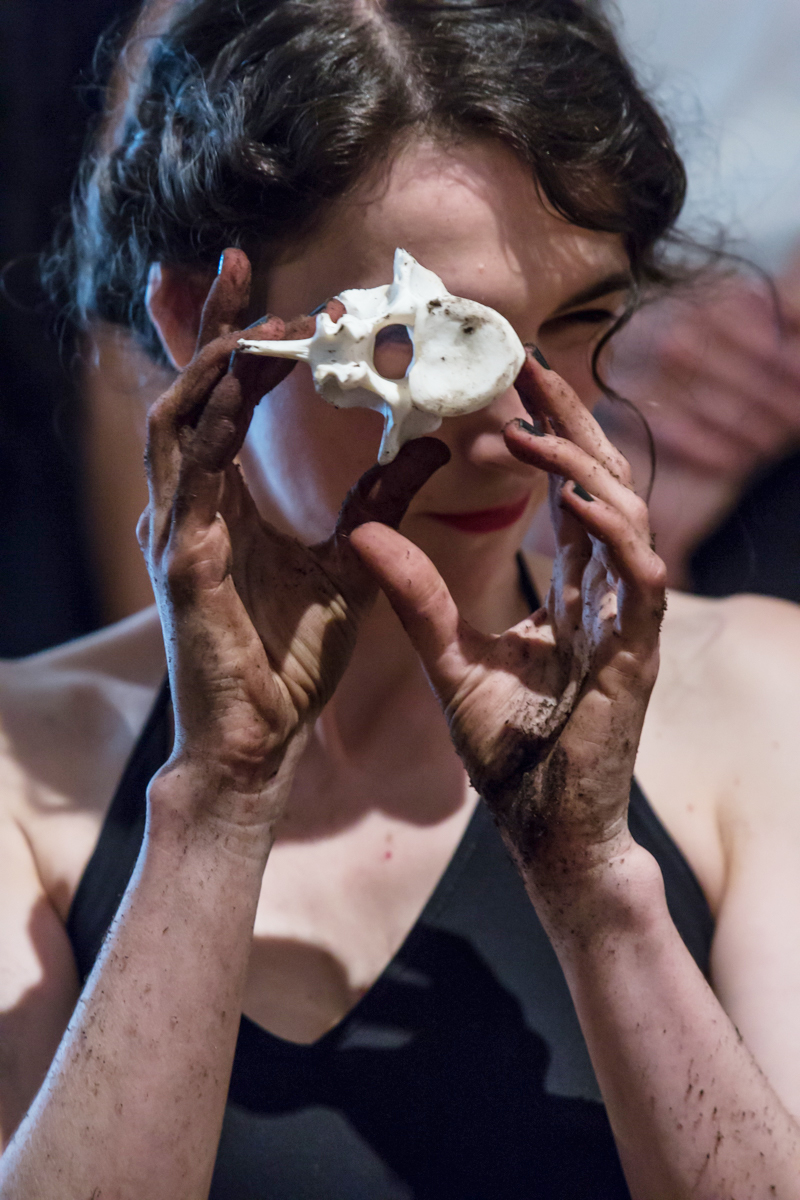
Makery: Your work ‘Wombs’ connects your body and fluids coming from contraceptive pills to the environment. Can you comment on the way your sexuality connects to the environment in this way, in a kind of closed system?
Margherita Pevere: I would rather speak of openness than closed systems, although I see why you think of it. The work is conceived as a series: so far there are 3 chapters (W .01, W. 02, W .03) but there may be more to say in the future. The plural form of the title refers to multiple possibilities of embodiment and manifestations. “Wombs” is a space of possibilities that exceeds the actual organ per se to look at various negotiations – with my sexuality, with the environment. My artistic practice engages with how matter behaves and ecological complexity. I consider my body as a (bio)material. For Wombs, I have looked at possible ways my sexuality exceeds what I would otherwise consider “my” body. “My” body is female, but I do not menstruate because of the hormonal composition of the pill I take. I was not always in relationships where contraceptives were needed. My body will continue changing and so will my sexuality. In the different chapters of the series I looked for possible openings and encounters with organism that are “other”, and worked aesthetically on organs outside a body – or bodies without organs, if you wish.
Among the compounds that can interfere with endocrine systems of both wildlife and humans, there are also hormones. In popular media there has been a sort of panic for the consequences of contraceptives and other hormonal therapy on men and watery ecosystem. Now, the research on endocrine disruptors is extremely relevant, but how certain popular media understood it, linking women and people under hormonal therapy with pollution is a totally misleading narrative. At the beginning of the project there was the question “where do I stand in this?” My conclusion is that hormonal therapy used by humans is a little thing in comparison to the amount of hormones and other drugs used in farming.
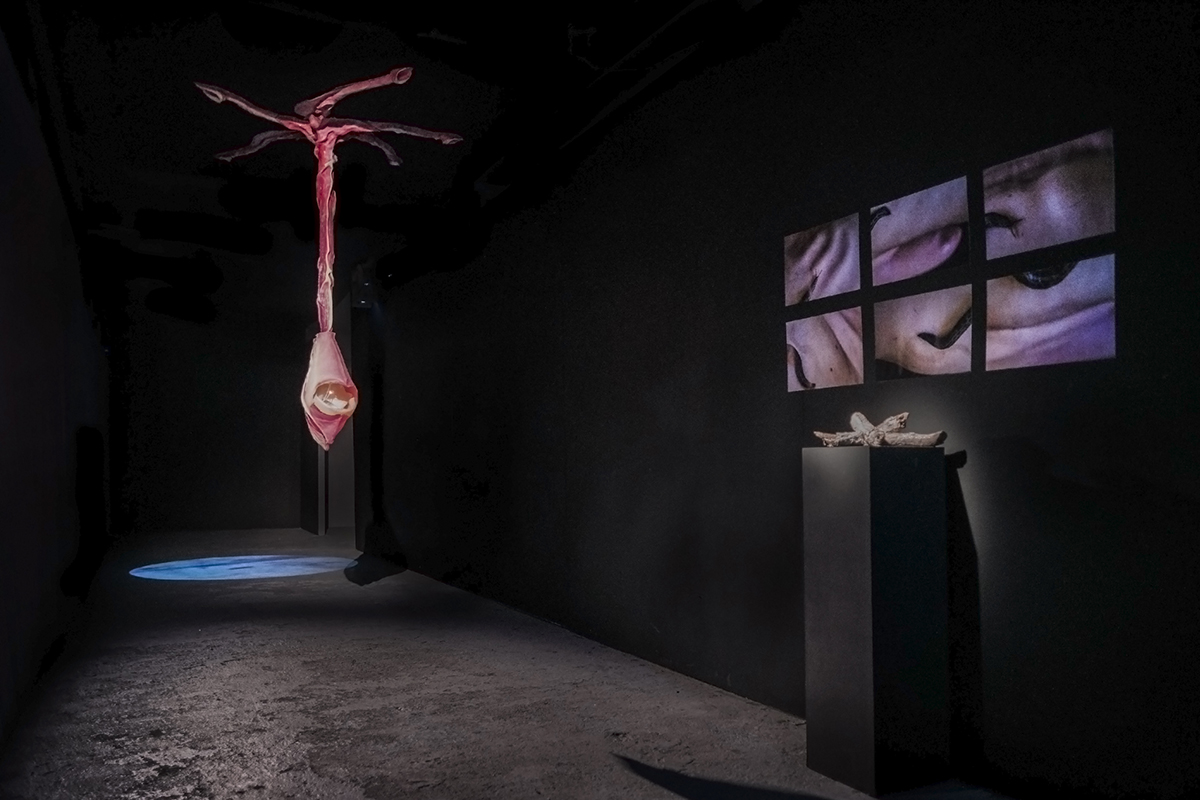
The idea of fluids in the work on the one hands refers to bodily fluids. On the other it refers to the understanding of the body as something that is not sealed, but open, permeable, and leaky. Open to other humans, to the environment. What we eat, wear, digest, and excrete traverses and affects what we are. At the same time, bodies shuffle and process molecules and then excrete them into the environment through urine, sweat, milk, semen. Philosopher Astrida Neimanis writes beautifully about Bodies of Water. Before her, Margrit Shildrick explored the bioethics of reproductive technologies through the idea of leaky bodies to counter the dogma of a self-enclosed individual.
When I started the project, there were many things I did not know. I started interrogating myself during a visit to my gynaecologist in Berlin, where I realised how easy it was for me to choose the contraceptive that most suited my lifestyle. Still today, self-determination and healthcare are not that accessible everywhere, see the fight of Polish women in these weeks. With the curiosity of the bio-artist, I wanted to understand precisely how the organs are modulated by specific molecules, but it was clear the doctor did not have time for such explanation. So, I started to research independently.
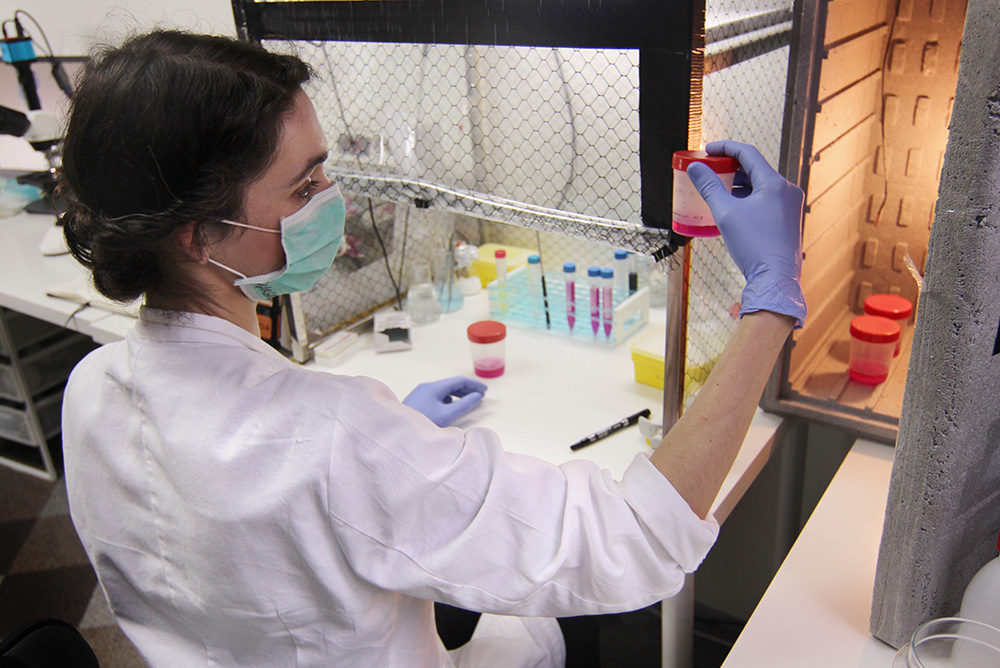
How does this connect to the climate emergency?
We need to take a step back here, and look at things from a broader perspective. Climate emergency is one among many aspects of the complex phenomenon of environmental disruption. The way we, in the global North, live, is not sustainable environmentally. To give you an example: the way I am replying to your questions – typing onto a computer keyboard and then sending a file to you via email – is not sustainable. Not only unsustainable, it is violent to the environment. There is an ecocide going on, and we are part of it. Also, the way we have been making and circulating art in the last decades is not sustainable. Writing this… hurts, of course. It hurts, because it is not that one individual can just quitting laptops and smartphones or use sustainable materials in art to counter the ecological disruption: there is urgent need for extensive policies that can create change. It hurts, because digital technologies shaped the way we are (I am enjoying the conversation with you very much, and appreciate Bandits Mages’ effort to migrate online the exhibition Mondes Multiples). For many, those technologies are even more important: think of activists, or those who necessarily rely on technology to communicate. Think of lockdown without internet. But what about their environmental footprint? This example reminds us that every our action is interconnected ecologically. It is time to start see our actions in the bigger picture of what is happening around us (and then, who is “us”?), which is environmental disruption. This interconnectedness is the substrate for my work.
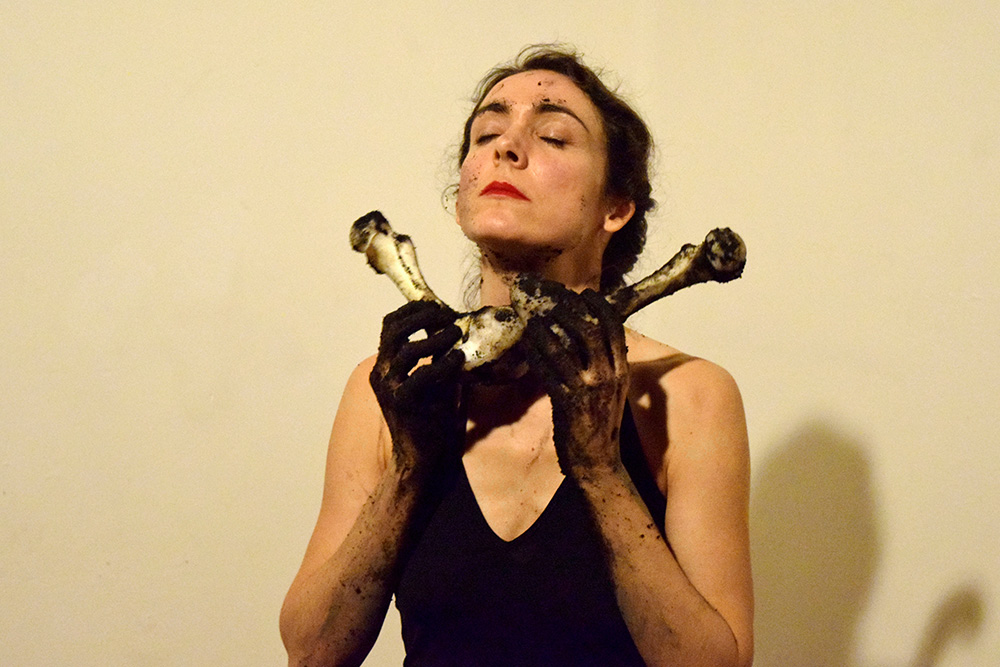
I wish we could see more of our waste, so that one could understand what happens to our stuff. Shit and rotting meat pose health risks, so we learnt to build sewers and administer trash – which is important. But it’s easy to lose touch with to how long it takes to grow apples, when it makes sense to eat meat, and what happens to the leftovers. What happens to plastic wrappings. What leaks from dumping sites are. Clearly, I am not saying I want to go back to before sewage existed. My point is that removing waste from the picture gives a false perception. We should organise a visit to waste management facilities with artists and curators as an artistic project.
PS: the ramifications of digital technologies shaped the way we are have been at the hearth of media art since its early days, and it is interesting how such discourses are timely in times of lockdown. In a talk produced by the Fronte Vacuo artists group , which I co-founded with Marco Donnarumma and Andrea Familari , Marco discusses the relation of body and technology in the arts and how the body is at the center of a transdisciplinary movement in dance and theatre.
Your new work on ‘mourning’ reflects that we are all in a constant state of dying. Can you explain this further? Can you describe what a future exhibition or project might look like?
Dealing with biological matter exposes you to a constant negotiation with death: in the various stages of the work with living materials, organisms and their parts, you start a culture, kill it, sterilise equipment. You grow plants, make grafts, crop and kill. Working with life, you become intimate with death, even when you administer it. What I am researching is how to rethink death beyond human terms in times of ecocide. Can we mourn ecosystems? Decaying matter is crucial for biodiversity, so for this project I embrace the perspective of necromatter. The project begins with a shift in perspective: I am not a living being, I am already dying, I am a dying being. These ideas have been enriched from the exchange with the amazing work by the Queer Death Studies Network.
The project is in the preliminary research phase, so it is early to say precisely what the outcomes will be. I see art as research that is very process-based and at the beginning I tend to remain open about how things will manifest: I let the materials speak to me. I also started to feel unease with the exhibition format. I love shows and believe they are a blissful way of knowledge production, but I think they retain too much of the Wunderkabinett, a collection of notable objects that is historically linked to the display of social status. I am very much intrigued by hybrid formats, like those pursued by curators Regine Rapp and Christian de Lutz at Art Laboratory Berlin, a courageous venue I have the joy of collaborating with. Let’s see where this will lead.

You have commented on the way farming contaminates the environment. Can you expand on this?
There is consistent research on the environmental footprint of intensive farming. Apart from the conditions of animals (as if that was not enough!), intensive farming is a ticking bomb for various reasons: it reduces biodiversity by focusing on specific breeds and creates the substrates for diseases because of density and lack of biodiversity. In order to stimulate “marketable” growth, animals are fed with hormones, and, to counter the risk of widespread infections, are treated with sheer amounts of antibiotics, which contributes to antibiotic resistance. Slurry often ends up in watery ecosystems. Traditionally, manure is used as fertiliser, but many European countries produce too much manure than what the agricultural surface can receive, so… it is exported. Animals are culled in case of crisis, as we know also from the current pandemic, which poses further health risks and waste management issues. Such scenarios were partly the inspiration of my artwork Lymph.
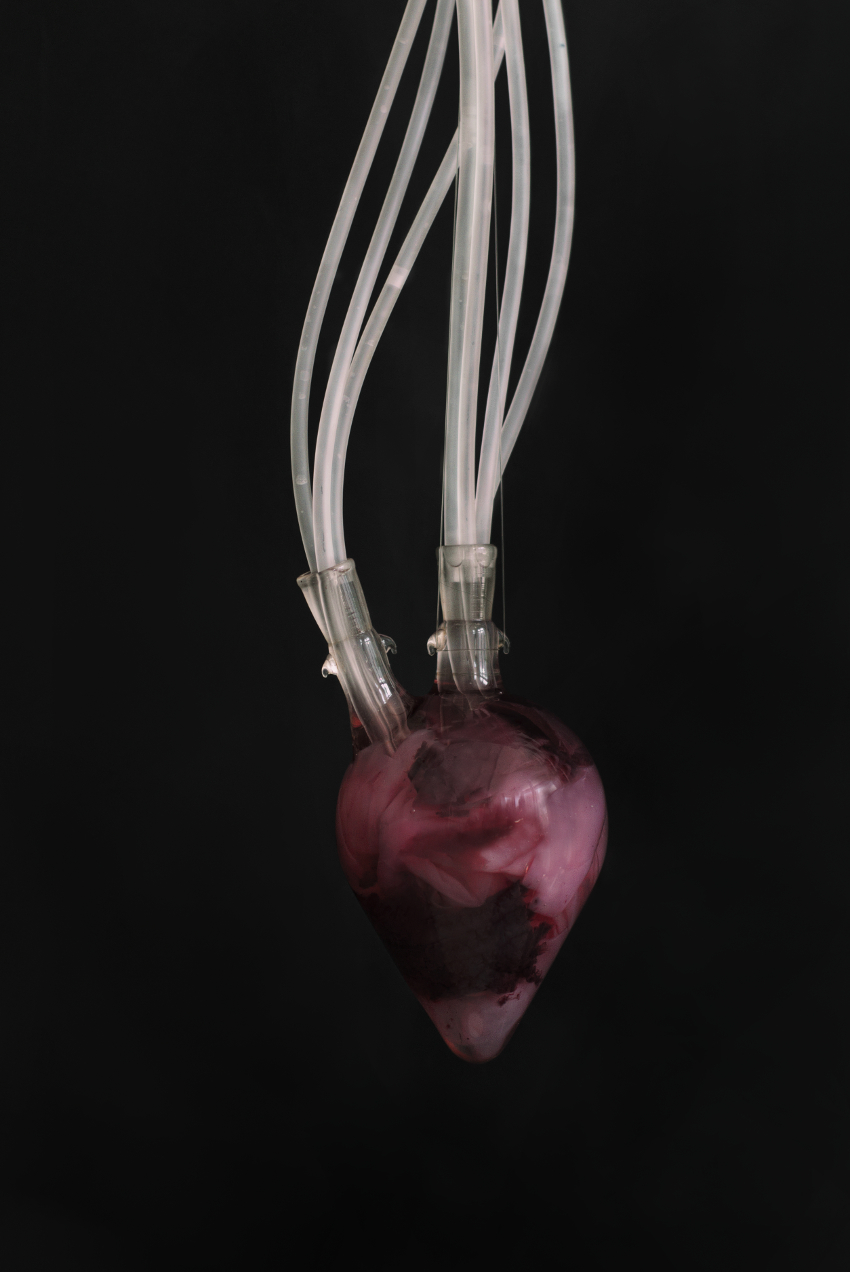
As an experienced bio-artist how have you responded to the COVID-19 crisis?
Good question, it was a complex mix of reactions. As a bio-artist, I saw the relevance of what our community and radical performance art has been working on for decades. The intra-action between biological agents, bodies, ecology, science, society took the stage. Feminist philosopher Marietta Radomska (who is my PhD thesis adviser together with Prof Helena Sederholm and artist Kira O’ Reilly ) developed the concept of non/living to describe entities that transgress what is usually ascribed within or outsides the parameters of life: technologically supported bio-artworks but also viruses, prions, viroids, inorganic protocells.
All of a sudden, with the pandemic outbreak a non/living entity like a virus trapped humans worldwide. As a citizen I was infuriated, because researchers have been working extensively on possible pandemic scenarios due to lack of biodiversity. Yet, apparently no society took such research in serious consideration and there were no solid emergency plan on how to manage the situation and how to cope with lost jobs, children at schools, and healthcare. I felt for the Cassandras. For some days I wore protective goggles the same amount of time of medical staff treating COVID-19 patients in hospitals, until they left marks on my face.
The most intriguing part is that bio-art practice gave me not only epistemic tools to understand what was happening, but made me react practically. Biosafety protocols, sterilisation, the rituals of wearing masks and gloves and washing hands are the gestural companions in the biological laboratory. One must protect themselves, their colleagues, and their (living) material. As an artist, I have practised in institutional laboratories, citizen science spaces, and my studio, so I learnt to adapt protocols for sterile work to vastly different settings, hack instruments, and make hand disinfectant . In March 2020, I built a UV chamber to sterilise objects before using them at home and produced enough hand disinfectant, which I still use.
You have said you were able to alert your family in Italy in advance of the pandemic because of your knowledge of bio-safety. Can you tell us more?
In February and early March 2020, attention on the COVID-19 outbreak was rising, but continental Europe was not extensively alarmed and people seemed to be worried with life as usual. I live in Germany, my PhD is in Helsinki, my family and old friends are on the Northern Adriatic coast and in Milan in Italy, so I usually keep an eye on news from all these regions. The bulletins in Northern Italy reported increasing contagion numbers, but still only one casualty was registered in the region and neither co-morbidity nor links to age were outlined. I instinctively warned my elderly family members to avoid social occasions in order to reduce the risk of infection. I then explained to them how to use masks and gloves, and the protocol to wash hands properly. Those informations were not publicly available at the time. We all know how the situation developed in the following weeks and months. I am not a doctor, nor a virologist, nor an expert in public health. The understanding of contamination from biological agents and sanitation comes from the practice of biological arts.
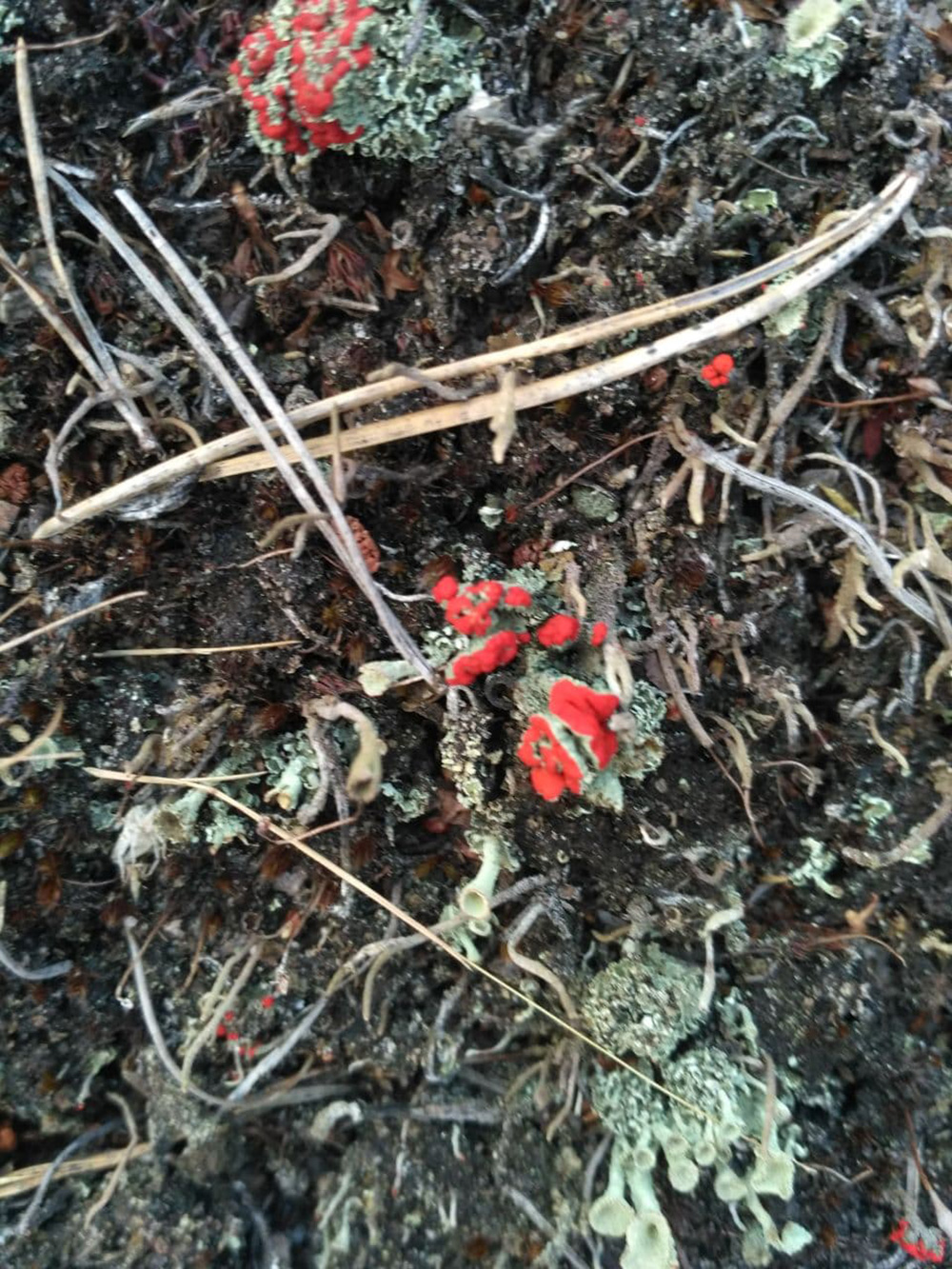
How have your colleagues in the bio-art community responded collectively to the pandemic?
There has been a lot going on, and still is! I must say I felt really part of an extended community. When things in Italy started getting dire, before it hit the headlines, I reached out immediately to my colleagues. I remember clearly when I had the urge to reach out: I was walking in the woods in Chorin nearby Berlin, discussing mycelium manifestations and getting high from moss with Marco Donnarumma, but we were both worried about the news in Italy. It suddenly became clear how that which was happening around us had already been part of the work of bioart and body performance communities for decades.
I reached out first to a group of peers with the intention to issue a public statement, many of them replied. We do have something to say in these times and should be vocal. Many of the colleagues I addressed replied and we started working on a text, which then flowed into other activities. In the following weeks I was in touch closely with Karolina Żyniewicz and Robertina Šebjanič . I joined some of the many valuable initiatives which germinated, such as the glorious FEMmeeting Teapot chats . Biofriction invited me to join the Braiding Friction series . Overall, there was support with each other and a healthy dose of critical discourse. We are far from seeing the end of the pandemic, so there will be a lot more to say. I wish our voices reach out to the general public too.
Can you describe the research questions in your PHD and tell us how close you are to answering them?
Questions in artistic research are meant to stay open, I think. So, probably they will continue speak to me after I defend my thesis. My research received a lot by looking into them. When I formulated my research questions I was looking at the friction arising from crossing the ideas of the body as a non-enclosed entity and living matter as a place of contamination of human origin. They are questions I addressed through the artworks Semina Aeternitatis and Wombs. At a theoretical level, I have adopted epistemic tools from feminist post-humanities and queer reading of the environment.
What has emerged are a constellation of leaky bodies and shared vulnerabilities – of bacteria, of secret memories, of slugs, of myself. There is a trajectory of shared vulnerabilities in biological arts that strongly resonates with the questioning of bodily borders in the work by performers such as Ron Athey and Kira O’Reilly. Embracing such vulnerability is an act of queering dichotomies and dualisms, which is a strong action towards moving beyond anthropocentrism. Right now I am weaving all this into my dissertation.
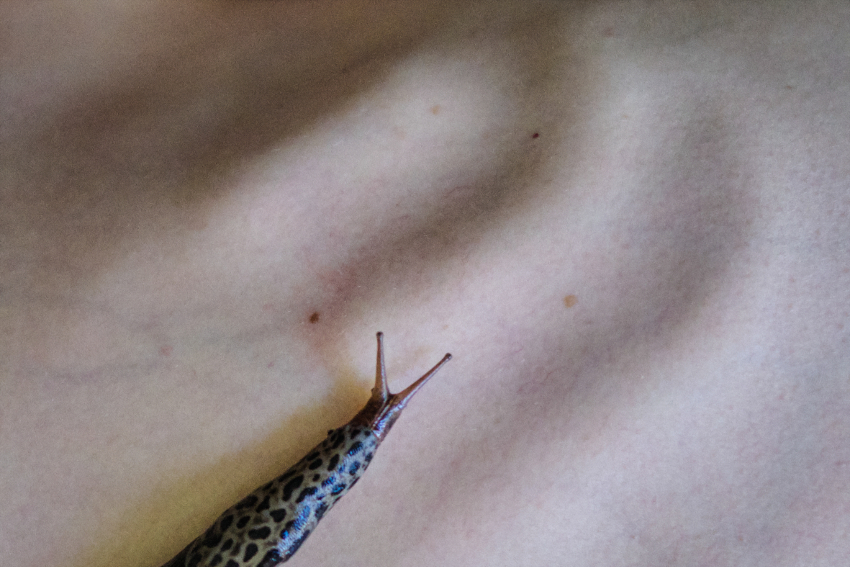
What do you think are the new boundaries to be crossed in bio-art in the future?
Your question reminds me of a conversation I had with artist Erich Berger at the inception of the pandemic. We asked each other how art may be transgressive in times when boundaries are important in human society for the well-being of others before and our own. The question stayed with me. It also led me to another underlying question on the hidden friction areas of today’s society. I believe artists and researchers are antennas capable of picking up weak signals and underground trembling before they surface to the public discourse. What are today’s taboos, the things no one dares to speak of? I think the real friction is not what we see in the mainstream news, sometime becomes difficult to discern actual taboos from what is polarising or trending. I think there is a lot to research from an a-human perspective.
The works of Margherita Pevere on her website.
Wombs W .02 W .03 at Outré: Encounters with Non/living Things, Curated by Bilge Hasdemir.
V1 & V2 Galleries at Väre | Aalto University, Helsinki (FI), and online. November 19th – December 7th.
Wombs at Mondes Multiples, Bandits Mages, Bourges (FR). November 19th – December 6th.
Margherita Pevere’s contribution to The Camille Diaries Symposium at Art Laboratory Berlin in the panel M/others, Wombs and Placentas, moderated by Tuçe Erel.
